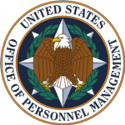 How Federal Per Diem Reimbursement Works - FederalPay.org
How Federal Per Diem Reimbursement Works - FederalPay.org
Notice: As of August, 2018 reduced flat-rate per diem rates for long-term travel is not longer authorized. This authorization was repealed. You can learn more here (PDF).
Official Travel
Many federal positions require individuals to travel for work. In recent years, travel has been restricted in order to save money. Federal employees are no longer allowed to travel to conferences, with few exceptions. Still employees may need to travel for training or to perform their duties.
While on official travel, the government will purchase all ticketed travel and will reimburse the traveler for other incidental costs incurred during the course of travel. Plane tickets, public transit, rental cars, tolls, gas and parking are all common expenses that will be reimbursed, paid by the government up front or can be charged to a government issued travel credit card. In all cases, employees must choose the most affordable means of transportation, within reason. Because employees are paid while traveling time is also factored in while determining most affordable way to travel. For example, it may be worthwhile to pay for a slightly more expensive direct flight if it will save the government from paying an employee during a long layover.
Driving versus Flying
For trips that are less than around 400 miles each way, it is often more affordable to drive than to fly. In these cases employees can rent a car for the course of the trip, which would be paid for by the federal government. If the employee prefers, they can take a personally owned vehicle and the government will reimburse the cost of gas and wear-and-tear on the car. The rate employees on official travel are paid per mile is determined yearly by assessing average fuel and other costs. There is also a lower rate paid per mile is the employee is using a personally owned motorcycle for travel. If a government owned vehicle is available for the traveler’s use, the government owned car must be used. When using a government owned vehicle for travel only fuel costs will be reimbursed. These mileage rates are the same amount the IRS allows individuals and private businesses to write off as business expenses.
Lodging Costs / Meal Costs
In addition to travel costs employees are paid a Per Diem (meaning ‘per day’ in Latin) to cover additional expenses while on travel. There are two kinds of Per Diem. Lodging Per Diem covers hotel or other lodging expenses. If an employee spends less than the Per Diem rate on a hotel they must return the difference to the government. The second form of Per Diem is Meals and Incidentals (M&IE). M&IE Per Diem is designed to cover the cost of breakfast, lunch and dinner and other miscellaneous charges one might incur while on travel. M&IE Per Diem will be paid at a pro-rated rate if employee is on travel for part of a day. Employees are allowed to keep the entire M&IE Per Diem regardless of whether they spend all of it that day.
Per Diem rates are based on location and time of the year. Hotel prices often increase in the summer months so Per Diem rates will increase during those months as well. The federal government conducts cost of living surveys every year and uses this data set Per Diem rates appropriately.
Hotels in areas where official government travel is common will often offer discounted room rates that is equal to the government Lodging Per Diem rate. This is often a significant discount but is only offered on regular business days and the employee must present a government issued employee ID.
Flat Rate Per Diem
For trips lasting longer than 30 days, Per Diems are paid at a flat rate of 75% of the normal rate. This reduction applies to both Lodging and M&IE Per Diems. Trips lasting longer than 180 days are prohibited unless approved at a very senior level. For trips lasting longer than 180 days Per Diem rates are paid at only 55% of the normal rate.
Earnings and extra expenses while and official travel should balance out to be equal to what the employee would normally earn while not on travel. Employees can spend frugally and end up pocketing more money than they normally would or employees can spend more lavishly and incur some extra cost. Employees are intentionally granted some leeway but the federal government works hard to ensure that on average employees break even while on official travel.
Related Articles
Is this article incomplete or outdated? Help improve this article by contacting us with your suggestions.
Topics: Per Diem
